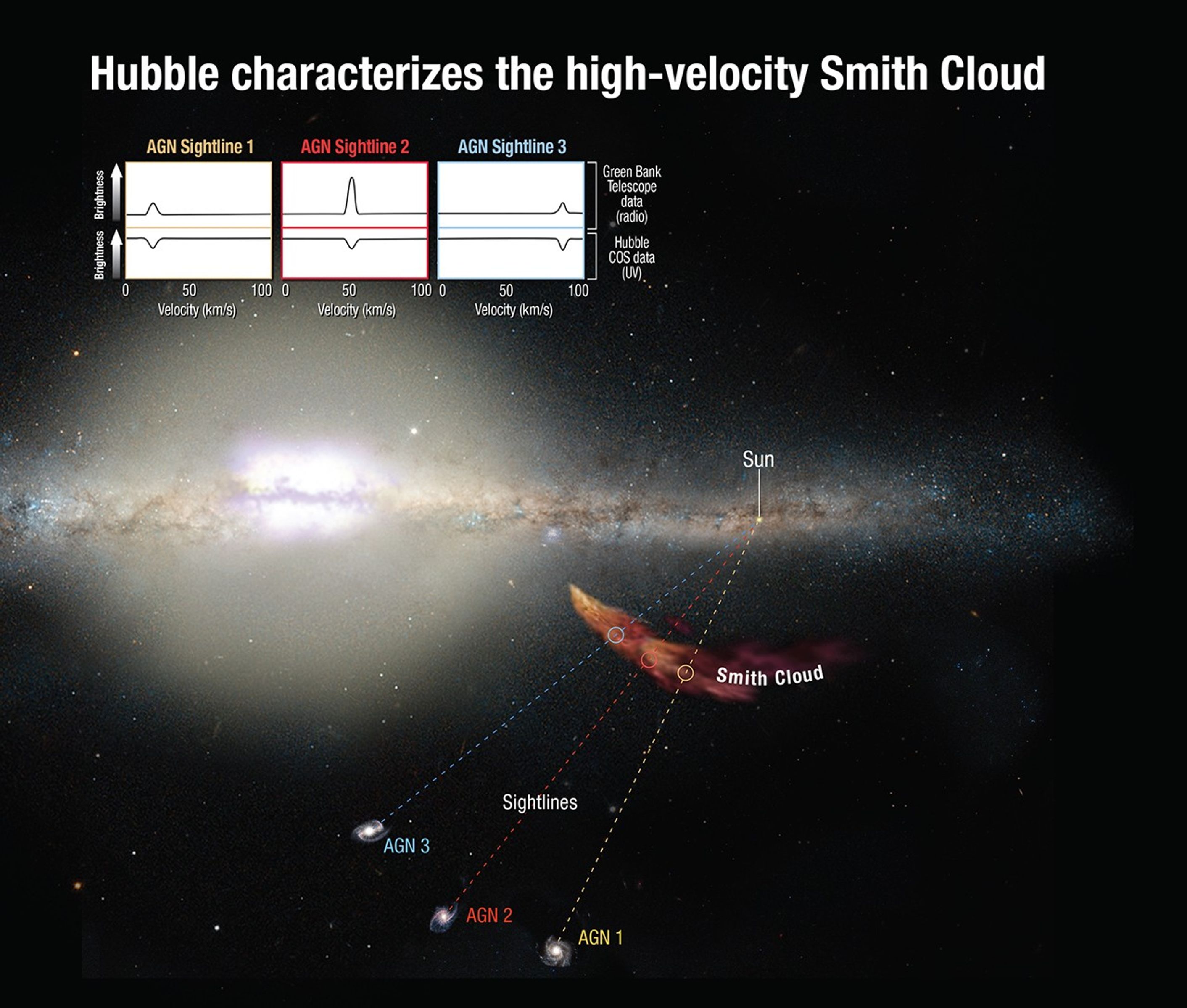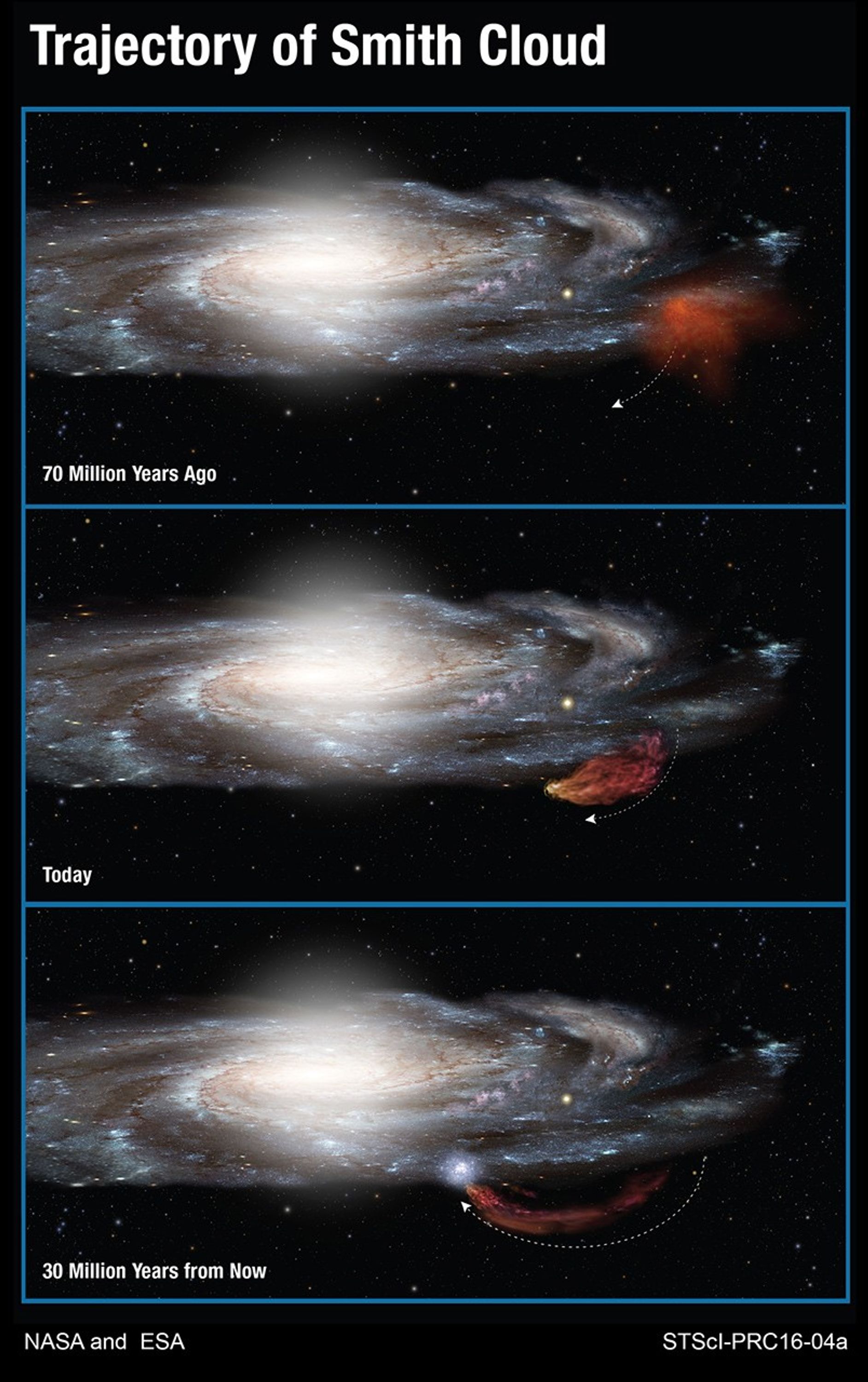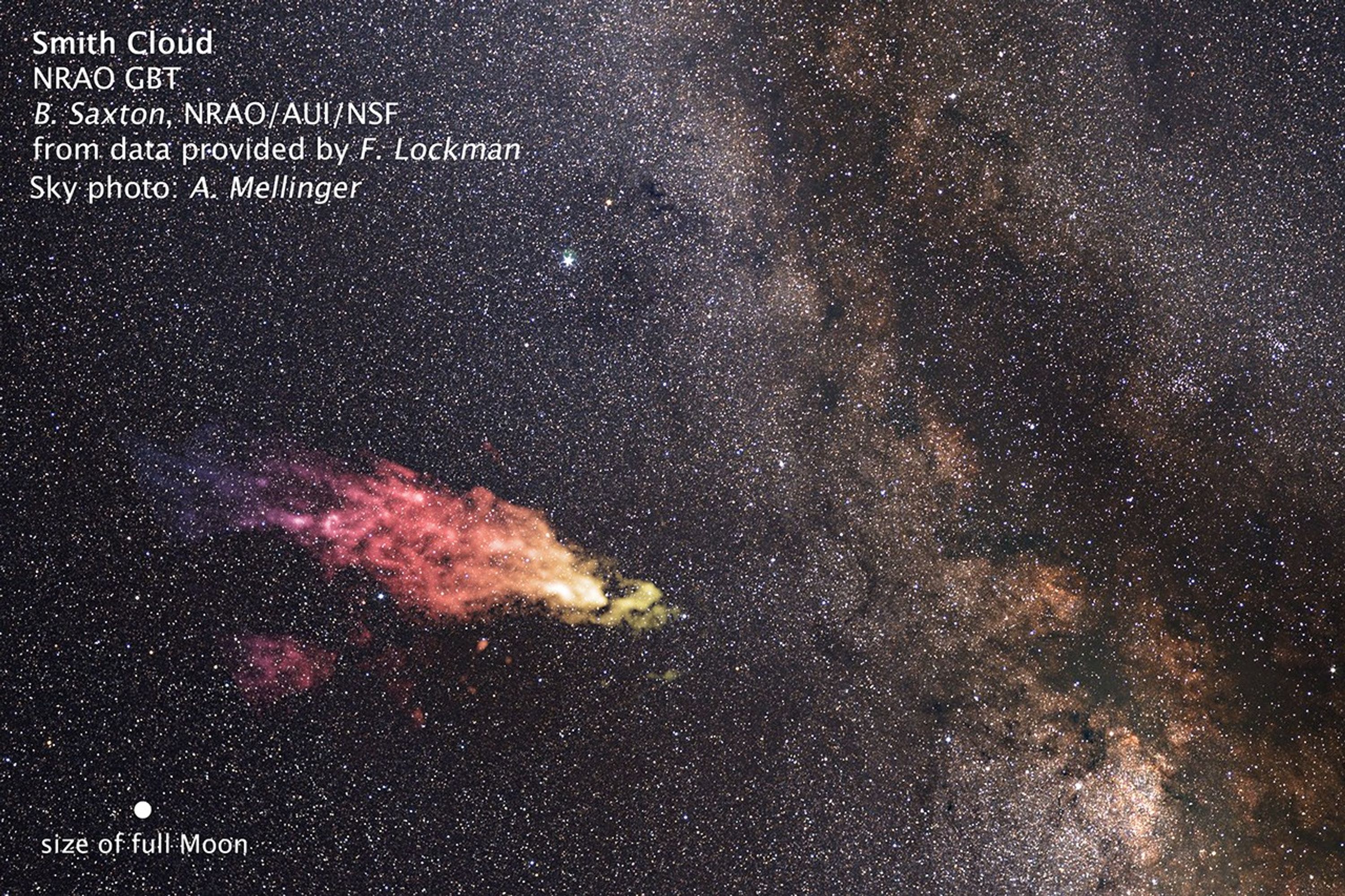1 min read
Hubble Characterizes the High-Velocity Smith Cloud

The infalling Smith Cloud does not emit light at wavelengths that the Hubble Space Telescope is sensitive to. However, Hubble's Cosmic Origins Spectrograph can measure how the light from distant background objects is affected as it passes through the cloud. These measurements yield clues to the chemical composition of the cloud. By using these intergalactic forensics, Hubble astronomers trace the cloud's origin to the disk of our Milky Way. Combined ultraviolet and radio observations correlate to the cloud's infall velocities, providing solid evidence that the spectral features link to the cloud's dynamics.
- Object NameObject NameA name or catalog number that astronomers use to identify an astronomical object.Smith Cloud, Milky Way
- Release DateJanuary 28, 2016
- Science ReleaseHubble Sees Monstrous Cloud Boomerangs Back to Our Galaxy
- Credit
Related Images & Videos

Trajectory of Smith Cloud
This diagram shows the 100-million-year-long trajectory of the Smith Cloud as it arcs out of the plane of our Milky Way galaxy and then returns like a boomerang. Hubble Space Telescope measurements show that the cloud, because of its chemical composition, came out of a region...

Size of Smith Cloud on the Sky
This composite image shows the size and location of the Smith Cloud on the sky. The cloud appears in false-color, radio wavelengths as observed by the Robert C. Byrd Green Bank Telescope in West Virginia. The visible-light image of the background star field shows the cloud's...
Share
Details
Last Updated
Aug 17, 2025
Contact
Media
Claire Andreoli
NASA’s Goddard Space Flight Center
Greenbelt, Maryland
claire.andreoli@nasa.gov




























